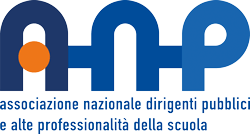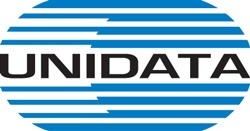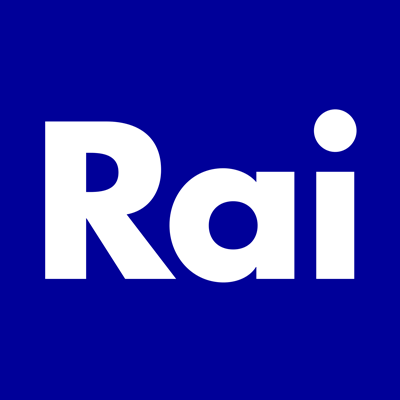introducing the winning project that will be displayed at Expo 2020 Dubai
The projects were aimed at envisioning a new life for the Eni installation at the Italy Pavilion at Expo 2020 Dubai
Recently, Maker Faire Rome and Dubai Institute of Design and Innovation worked together on “Braiding the Future”, a competitive workshop to envision the future of Eni’s installation at Expo 2020 Dubai, Italian Pavilion.
Over 4 days, 4 teams worked day and night to make the most out of the materials and the brilliant ideas they came up with. “Design”, as an approach capable of enabling a transformative thinking, was at the core of it all.
On June 3rd, a pitch session unveiled the concepts: jurors had a hard time deciding which project was the very best. Read below to discover them all.
What design can do
From the re-evaluation of product design methodology to the complete overhaul of longstanding business models, today’s forward-thinking designers are starting to look at how to solve tomorrow’s problems in a more responsible way.
Early studies reveal some interesting insights that may have ignited this key shift. It is reported that three out of every four decisions made regarding final materials and manufacturing processes take place during a product’s design phase, whilst over 80% of the ecological and economic costs are incurred before it’s even manufactured.
What this tells us is that design has a pivotal role to play in the way that products and services are made and used, and should therefore be equally crucial in catalyzing a transition towards a more resource-efficient economy.
As a result, a new model has been born — one that strives to cut down on the misappropriation of energy and the mismanagement of resources whilst simultaneously seeking, wherever possible, to repurpose, refurbish and repair products, as well as reimagining the materials and processes from which they were conceived.
“Gone are the days of sustainable design. Now we have to learn to think about life cycles, and designers have a key role to play.”
— Nat Hunter, Co-Director of Design at The RSA
The challenge
“Braiding the Future” was launched to envision a new life for the Eni’s installation at Expo 2020 Dubai, Italian Pavilion
The installation focuses on the algal biofixation of CO2, a new way of using CO2 to produce valuable nutraceutical and food products. The project was designed by the architectural and innovation firm CRA-Carlo Ratti Associati and Italo Rota and gives an artistic interpretation of the intensified CO2 biofixation process that was developed in Eni Research Centres.
The installation covers an 85sqm water mirror located at the entrance to the VIP area and acts as a visual hook to give a flavour, an example about Eni‘s innovation and research to build a low-carbon future. It artistically recreates microalgae cultivation using a spectacular cascade of up to 20 meters long technological vines, produced with recycled and 100% recyclable PVC. Through each of the LED lit lianas flow the microalgae: the see-through circuit therefore becomes a spectacular exhibition of the CO2 intensified biofixation process where, like in natural photosynthesis, algae use CO2 and light to grow and produce high-value nutritional compounds and more.


During the 4-day workshop, students focused on exploring the values behind the UN SDGs and stimulating interprofessional problem solving, to envision and design the future of the installation through the recycle and reuse of the PVC lianas.
The projects
Algrow
Algrow is a machine that decentralizes superfood production and operates as an independent-immersive spirulina (micro) factory
Spirulina is a A type of algae that is:
- High in nutrients (protein, vitamin b1, b2, b3 and etc.
- Antioxidant and anti-inflammatory
- Anti-cancer properties
- Blood pressure reduction
- Improves muscle strength and endurance
Algrow uses the pvc lianas and re-assemble them into a machine that grows Spirulina and serves it as a drink.
Algrow can be installed in schools, gyms, offices, anywhere usually healty food options are related to users’ diets positively. Such venues are in a powerful position to influence people’s diets; therefore attention to health food/drinks/products sold in them is necessary in order to try to improve awareness, diet , performance. Algrow uses the PVC lianas to grow the Spirulina algae within and to convey it towards the dispenser.
Lica
A statement piece you can keep on your desk, mount on a wall or “simply” arranged in thousand to create a urban farm, Lica is the module that, as a cat, “live several different lives”.

Sleek and elegant, Lica appears to be the “missing link” between individual and collective effort towards sustainability. Cut out of the PVC lianas and then mold it into a more functional shape, Lica is one of the most versatile example of domestic hydroponic device.
Ombra
Shaded structure that acts as an irrigation system for plants and a cooling system for people, Ombra is inspired by the hollow tubes, that are used to create a structure that allow for shading, but also for nourishing the plants that inhabit it.
Ombra is a system of concrete tubes and PVC tubes, arrange according the catenary arches method to allow for a strong structure.
Ombra creates an inviting garden gateway and living sculpture in the modern landscape. Easy to assemble, smart in the concept and effective in the purpose, it is super sturdy in hot climates, perfectly obeying the challenge it was designed to win.
Wastology
Wastology is 1 concept, 3 option, a close loop
An intelligent product that allows the user to repurpose organic, domestic waste by composting it in the comfort of their kitchen, Wastology fight the impact of food waste: in fact, the global food system is responsible for 30% of greenhouse gas emissions (Oakes, 2020). Besides, every year, food waste emits an estimated 3.3 billion tons of CO2 into the atmosphere, or nearly 1,000 tons of CO2 a minute (Oakes, 2020).
The compost that the user ends up with is then used to nurture the plants placed on top of the product. Powered by Arduino and linked to an app to tell the user when the to compose is ready and everything about humidity and health of the plant.
Wastology is also an app for real-time monitoring the health of the compost but also to access educational content, engage in “home-growth challenge” with other users, share information and suggestions.
And the winner is… Wastology!
The jury – made out of representative from Eni, CRA – Carlo Ratti Associati and Italy at Expo 2020 Dubai – agreed on Wastology as the idea that best match the initial requiremen’ts and that holds the most chances to turn into a real, marketable product (so to get rid of all the PVC lianas without wasting not even a cm of it!)
Awards
Wastology will be digitally displayed at Expo 2020 Dubai, in the Eni area within the Italy Pavillion. Besides, it will be also exhibited – onsite or online – at Maker Faire Rome 2021, which is due oct 8-10, 2021. Should Maker Faire Rome be held onsite, the winning team will also get the chance to travel to Rome to attend Maker Faire Rome 2021.
All projects will get full coverage for their effort and work through Eni, Maker Faire Rome and Italy @ Expo 2020 Dubai through press and social media channels.
About Italy at Expo 2020 Dubai
The Italy Pavillion for Expo 2020 Dubai – that sees the involvement of Carlo Ratti, Italo Rota, Matteo Gatto and F&M Ingegneria – will use architecture for a creative and innovative presentation of “beauty that connects people”. It will offer visitors an unforgettable experience, presenting to the world the multidisciplinary skills, talent and ingenuity that can act to promote new educational, professional and business opportunities.


Situated in the Opportunity District, due to inspire visitors to act for a better world, the pavilion transforms discarded food and recycled material with the creative expertise of the technical partner Mapei to create circular architecture, in which structures are re-purposed.
Expo 2020 Dubai will officially open on October 1st, 2021.
Why is circular economy so important
“Looking beyond the current take-make-waste industrial model, a circular economy aims to redefine growth, focusing on positive society-wide benefits. It entails gradually decoupling economic activity from the consumption of finite resources, and designing waste out of the system. Underpinned by a transition to renewable energy sources, the circular model builds economic, natural, and social capital. It is based on three principles:
- Design out waste and pollution
- Keep products and materials in use
- Regenerate natural systems
In a circular economy, economic activity builds and rebuilds overall system health. The concept recognises the importance of the economy needing to work effectively at all scales – for large and small businesses, for organisations and individuals, globally and locally” (Ellen McArthur Foundation)
Maker Faire Rome – The European Edition has been committed since eight editions to make innovation accessible and usable to all, with the aim of not leaving anyone behind. Its blog is always updated and full of opportunities and inspiration for makers, makers, startups, SMEs and all the curious ones who wish to enrich their knowledge and expand their business, in Italy and abroad.
Follow us, subscribe to our newsletter: we promise to let just the right content for you to reach your inbox



























































































